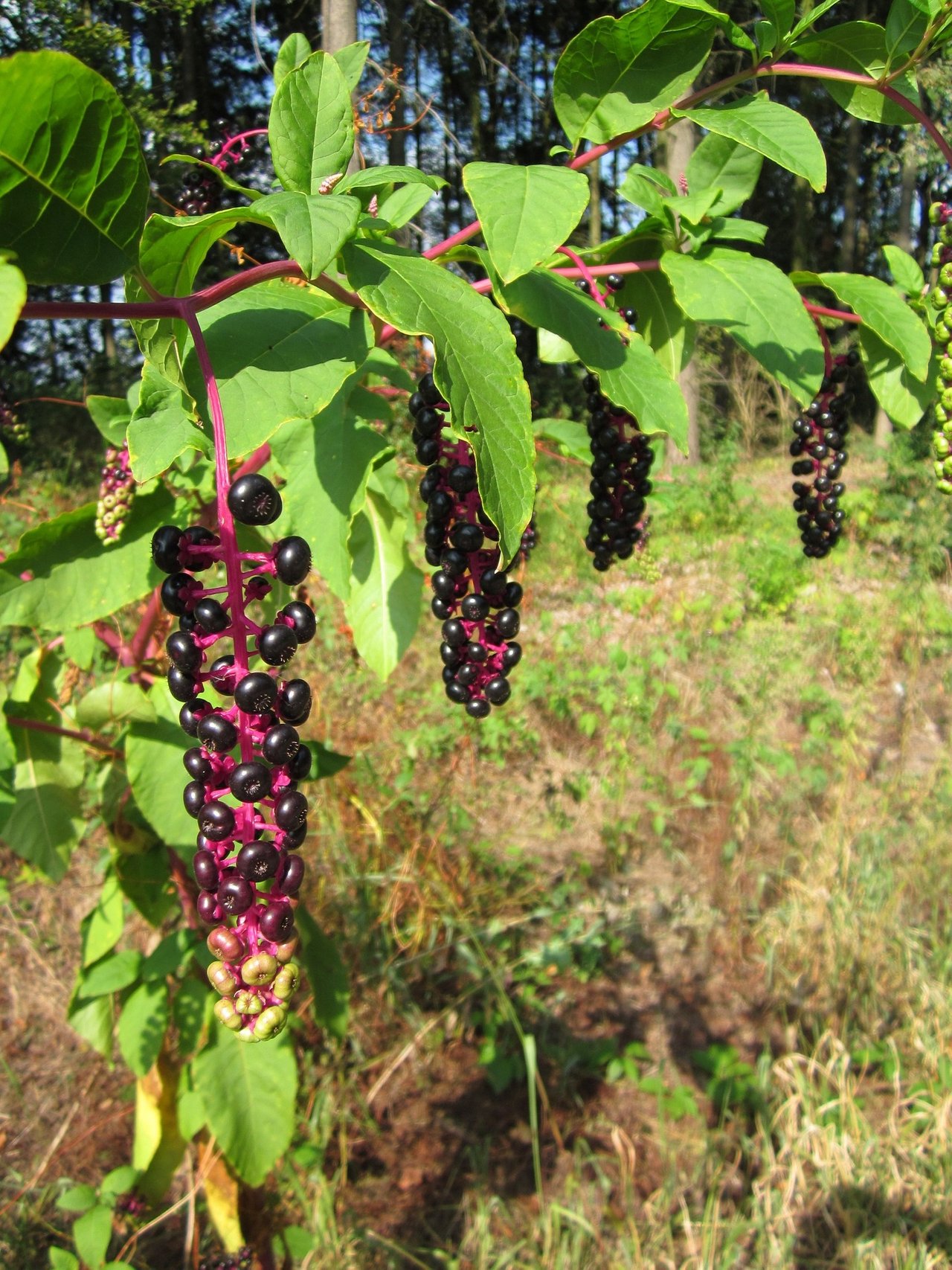Do you know this herbal ally? It is a long time favorite of mine.
That's right, even some poisonous plants can still be allies.
Phytolacca americana has a thick juicy pink stem that can reach the size of your forearm. It has large ovate rubbery green leaves and in late summer- tons of bright purple berries which are happily carried off by wild birds.
It is a strong weed. I've seen it grow to 8 feet tall! One tiny little sprout can turn into a huge shrub in just one year.
"Poke", as we call her around here- has a deep, thick, tough white taproot, making it quite difficult to relocate once established. It is native to Eastern United States.
The plant is considered poisonous to ingest and in some cases may cause dermatological allergic reactions.
I use the berries for this bright pink dye!
I gather the berries in late summer and then mash them with water and bring it to a heat that is oh-so-close to a simmer, but not quite... Then I add a lot of apple cider vinegar to fix the color, and then the yarn.
Now... Back when we lived in the Appalachian mountains in North Carolina, we learned that the old time folk down there eat some berries in a very strategic way.... Supposedly this is an old folk remedy to prevent cancer. (Don't try this at home kids) When the berries come into full ripeness in the summer a person eats one berry on day one, two berries on day two, three berries on day three... up to day five with five berries. Then, on day six, decreases to four berries, on day seven they eat three berries, and then back down to one berry on day nine. We too do this every year or so. And I will complete this paragraph by saying what my stepdad used to say to me, "Do as I say, not as I do"...
Back when we were a bit younger and wilder, and living in those sweet smelling mountains, we would also eat the early spring shoots of poke and called it as the locals did "Poke Salat" ... We'd cut them like asparagus when they were just a few inches tall, and steam them in two changes of water. I will say that was one delicious poisonous plant! (Again, don't try this at home!)
In all seriousness, it is true that many of our sacred herbal allies have been demonized by scientists fiddling with them in their labs and getting unsavory results, as well as some misinformed people going and cooking themselves up a bunch of leaves they found and getting sick (or worse).
In our experiences we were using this plant very sparingly as food or medicine, and under the guidance of wise herbalists and folk healers. It is crucial to understand not only plant identification but many other subtleties such as exact harvest methods, time of harvest, and exact preparations...
We suggest everyone do their own research and consult a professional before ingesting any new plants!
Susan Weed, a time honored herbalist says in her herbal e-zine
pokeweed—an old favorite of wise women dealing with breast lumps and breast cancer. If I felt a suspicious lump, I’d reach for poke root oil. It reduces congestion, relieves swelling, and literally dissolves growths in the breasts.
Jethro Kloss, author of the classic herbal Back to Eden, used freshly grated raw poke root poultices to burn away breast cancer. Caution: Fresh poke placed directly on the skin is strong enough to damage healthy tissues as well as cancerous ones.
The infused oil is also effective and far safer. A generous amount is gently applied to the lump, covered with a flannel cloth and then with a hot water bottle (no heating pads), and left on for as long as you’re comfortable. This is repeated at least twice a day. Poke root oil is too powerful for regular preventive care. Caution: Poke oil can cause a rash on sensitive skin. Ingestion of poke oil can cause severe intestinal distress.


